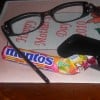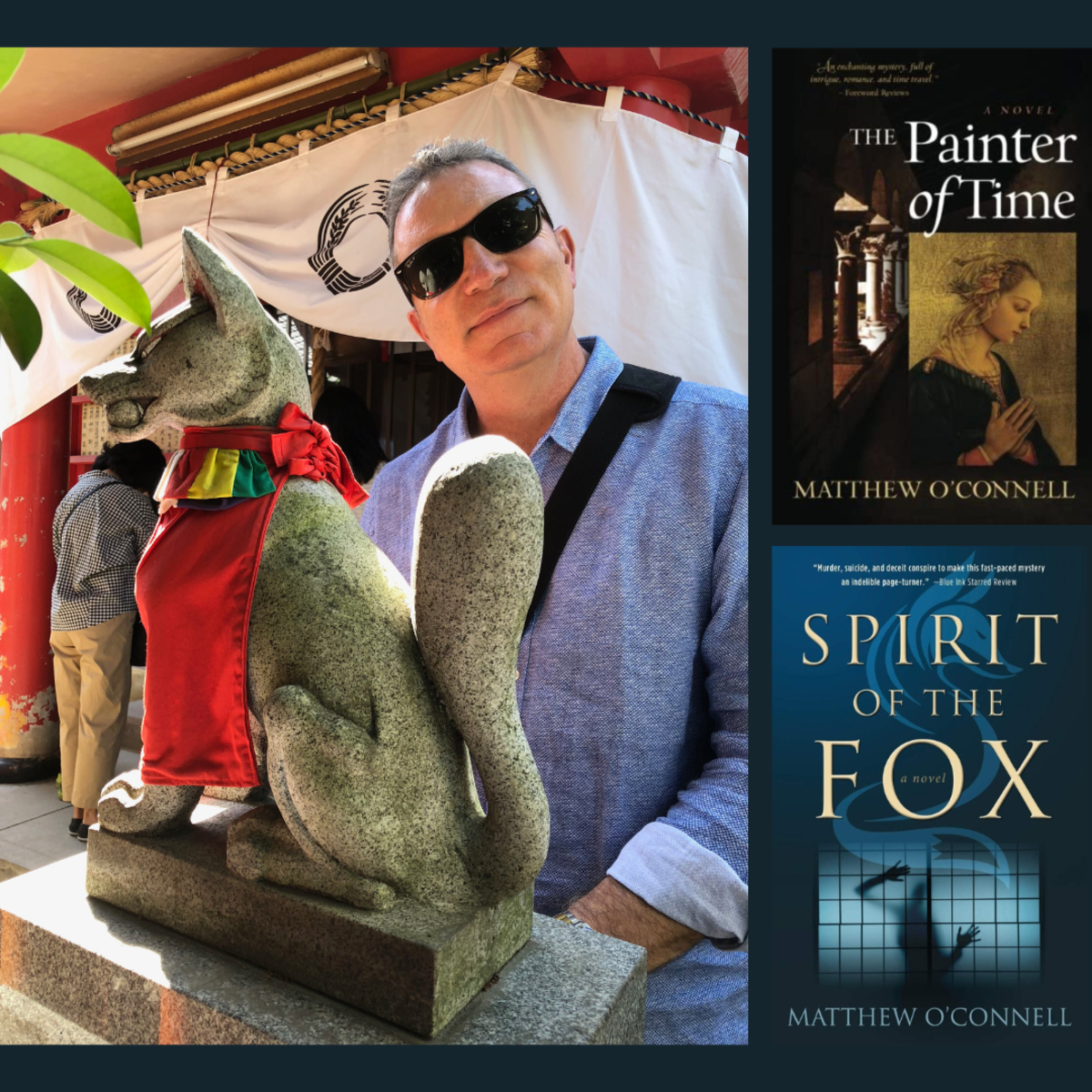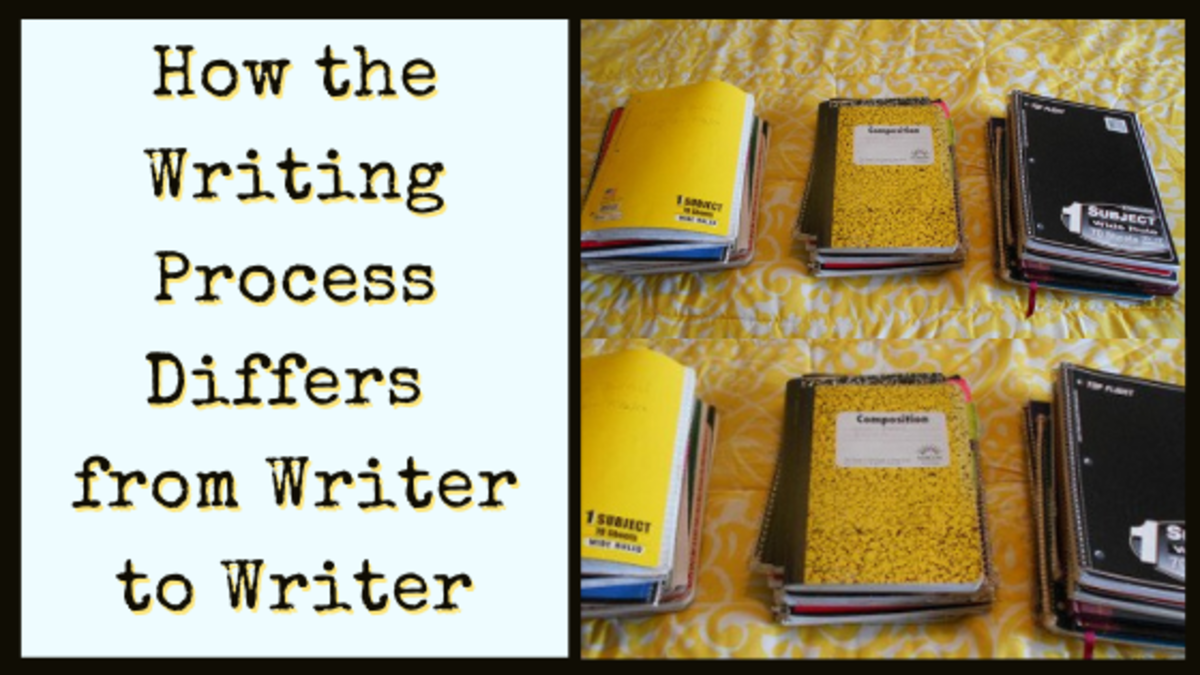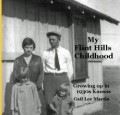Writing With a Process
Getting Ready
Writing an article, for example, can be “a piece of cake” or “a piece of work.” The choice belongs to the writer (you). An article is a written prose composition on a specific topic, usually nonfiction, and used as part of a newspaper, magazine, book, or similar publication such as HubPages. Let us explore an approach to writing an article without all of the complexities.
These are the main parts of a composition (an organized piece of writing):
1. Introduction (Beginning)
2. Body (Middle and main part with all of the details)
3. Conclusion (End)
When you finish writing your article, it should have the three parts above. The number of paragraphs you write should depend on the amount of information you plan to include in your article.
After choosing an appropriate subject, you are ready to brainstorm, plan, and organize your writing. We will use a writing process to help with that. These are five stages of a writing process:
1. Prewriting
2. Drafting/writing
3. Proofreading and Revising
4. Editing
5. Publishing
Skipping the stages can be very tempting. You may want to just start writing your composition as ideas pop into your head, but it is not advisable unless you are a practiced writer. Many professionals can mentally organize and keep a photographic memory of it all. Personally, I need a “recipe” before my eyes--and that is the process above--along with all of my developments.
Understanding the Writing Process
1. The prewriting stage is where you choose and narrow a writing subject, brainstorm and write down as many ideas as you can, weed out (delete) unwanted ideas and add any new ones, logically organize your ideas, and use them to create a working outline, which is also like a recipe. You may revise your outline anytime you wish as long as your composition reflects the changes. (See an outline model below.)
Research, using reliable sources, to get more information from the experts. If you are an expert, or have full knowledge of your subject, you may, or may not, need to research. If your subject is "Breakfast Food Southerners (USA) Like," and you are from the South, this would be common knowledge for you, and would not require research. However, if your subject is "Why Women Cry for No Apparent Reasons," it is advisable that you base your article on research, not personal opinions.
2. The drafting/writing stage is where the writing of the composition begins. Follow your outline to include your chosen subtopics and to keep your writing organized.
So, you have written your article, and it is time to publish it. Wrong! Wrong! Wrong! The biggest mistake you can make is to stop the process here. This is a common mistake that many writers make. PLEASE, DO NOT DO IT! Continue the writing process.
3. The proofreading and revision stage is an extremely important, and often omitted, stage. This is where you get it all right. Kick out that sentence that is not related to your topic. Get rid of the bad grammar: Make your verbs agree with your subjects. Delete wordy sentences that do not say anything. Rewrite paragraph #2, for example, with more clarity. Correct all misspelled words. Improve word choice by deleting the vague and putting in specific, colorful, and meaningful ones. Delete slang and use Standard English words and phrases. Ask a reliable friend to proof your work after you have done your best to proof and revise it yourself. Use “Spell and Grammar Check” only after completing these efforts. Spelling and Grammar Check should never precede what you are able to do yourself. This list can go on and on, but use a lot of common sense to revise your article to reflect improvement. You will end with a polished article that you will be proud of. The writing process is almost complete.
4. Next, apply the editing stage. In the rush and excitement of finally approaching the end of your work, you type faster with your mind on the finished product. Quite naturally, you are apt to make a few minor errors in spacing, punctuation, capitalization, or spelling. Edit them and read your final draft as many times as you wish to rule out any missed errors and to feel good about your writing. If you are satisfied, say, “Well done!”
The final stage of the writing process is publishing. If you were in a classroom, you would publish by passing in your work to your teacher or sharing with your classmates. If you were writing an article for your local newspaper, you would mail a copy of the final draft to the editors. If you were at a board meeting, you would get the powerpoint ready and make your presentation before the other members. If you are writing for HubPages, just click on the “Publish” button and smile! This final stage is as easy as a snapshot.
Conclusion
I cannot express enough how important it is to follow a writing process to guide you through your article. While all of the stages are very important, most beginning writers make the terrible mistake of not proofreading and revising (#3) and going through the final cleanup of editing (#4) before publishing their articles. When you take care of these too-often-omitted stages, you will attract more readers who would likely read your entire publication. Happy writing!
Outline Model
The Parts of a Business Letter
A. Heading
B. Inside Address
C. Salutation
D. Body
E. Closing
F. Signature
Suggestions: Write a one-paragraph introduction, a paragraph on each subtopic, and a closing or summary paragraph; and you will have an article on “The Parts of a Business letter." If you feel the need to write more than one paragraph on any subtopic, this would be acceptable. Adding colorful illustrations would be like putting frosting on a cake.Thoroughness and appropriate creativity are encouraged.
Article Model
Check out the “Hub of the Day” in HubPages for a good example of an article model.
Writing Tips
Keep in mind that you may change any part of your article any time you feel the need, even if you carry it through the whole writing process. If you decide that one subtopic is too weak and you want to delete the paragraphs that cover it, do it. If you choose to add a stronger or more interesting subtopic, do that, too. Just make sure that your article reflects the changes made.
Always have access to quick references whenever you are writing (i.e., electronic or print dictionary, thesaurus, grammar handbook or a grammar textbook).
Terms to Know
Narrow - reduce or limit a subject to suitability or a more specific one
Example: "Effects of Alcohol on Man" narrowed to " Symptoms of Alcohol Poisoning"
Weed out - delete anything unwanted or not needed
Reliable sources - up-to-date sources (articles from magazines, newspapers, books, data bases, pamphlets, etc.) authored by experts; human experts
Unless a source's information is not likely to change, it may be wise to choose those that are no more than five years in use or less.






